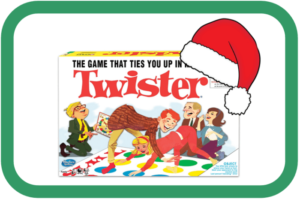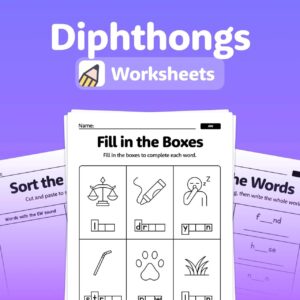
Twist-review board game formats offer a fresh perspective on gameplay, blending traditional mechanics with innovative twists that enhance player engagement. These formats not only redefine how we understand game dynamics but also enrich the overall experience, making each session unique and memorable.
Throughout the world of board gaming, twist-review formats stand out for their ability to incorporate educational elements seamlessly. They challenge players to think critically while providing enjoyable and interactive learning moments that elevate both fun and knowledge.
Overview of Twist-Review Board Game Formats
Twist-review board game formats have become increasingly significant in the tabletop gaming community, offering players a unique blend of mechanics and narrative engagement. These formats not only enhance the gameplay experience but also introduce innovative ways to review and critique games. Understanding the various types of twist-review formats can provide deeper insights into their implementation and appeal.
Definition and Significance
Twist-review board game formats refer to a specific approach where players evaluate games through dynamic and often unexpected lenses. This enhances the review process by incorporating elements that deviate from traditional methods, making the feedback process more engaging. The significance lies in their ability to foster creativity and critical thinking, transforming reviews into interactive experiences rather than mere evaluations.
Types of Twist-Review Formats
There are several distinct types of twist-review formats, each bringing its own flavor to the board gaming landscape. Here are some prominent examples:
- Collaborative Reviews: Players work together to assess game mechanics and themes, providing a multifaceted perspective.
- Competitive Critiques: Participants engage in friendly competition to deliver the most compelling review, often judged by peers.
- Narrative Driven Reviews: Reviewers craft a story around the game experience, blending their critique with creative storytelling elements.
Examples of Popular Board Games
Many popular board games have successfully utilized twist-review formats. Games like “Codenames” and “Dixit” provide opportunities for players to express subjective experiences through collaborative storytelling and creative interpretation, making the review process both enjoyable and insightful.
Educational Aspects of Board Games
Board games are not only entertaining but also serve as valuable educational tools, incorporating various learning methodologies directly into their mechanics. The concept of ‘Education queen’ refers to games designed specifically to enhance learning outcomes, merging fun with knowledge acquisition.
Education Queen Concept
The ‘Education queen’ concept emphasizes the role of games in teaching crucial skills and knowledge areas. By engaging players in strategic thinking and problem-solving, these games can significantly impact educational environments, making learning more interactive and effective.
Education Delightful Formats
‘Education delightful’ formats are designed to create enjoyable learning experiences. These games often feature playful mechanics that promote exploration and creativity, ensuring that players are not only learning but also having fun. Examples include trivia games that challenge players’ knowledge in an engaging way.
Education Trap Mechanics
The ‘Education trap’ mechanics encourage players to delve deeper into subject matter by presenting scenarios that require critical thinking to escape. This technique not only aids comprehension but also enhances player engagement, leading to improved learning outcomes.
Mechanics and Strategies
Understanding the mechanics within twist-review formats is essential for players looking to enhance their strategic thinking. These mechanics not only influence gameplay dynamics but also provide avenues for deeper engagement.
Key Mechanics for Strategic Thinking
Several key mechanics in twist-review formats promote strategic thinking among players, including:
- Resource Management: Players must manage limited resources to achieve objectives, requiring careful planning.
- Risk and Reward: Decisions often come with trade-offs, pushing players to weigh their options critically.
- Player Interaction: Engaging with others can alter strategies, making social dynamics a key part of gameplay.
Education Chop Strategies
‘Education chop’ strategies involve breaking down obstacles within gameplay to create engaging dynamics. These strategies encourage players to adapt and think outside the box, leading to innovative solutions and fresh approaches to challenges.
Education Destroy Elements
Incorporating ‘Education destroy’ elements can elevate gameplay by introducing challenges that test players’ skills. These elements demand adaptability and strategic thinking, creating a thrilling experience as players navigate through obstacles.
Game Design and Development
Designing engaging twist-review board games requires careful consideration of various factors that can enhance gameplay and player experience. This involves creating a framework that integrates educational aspects seamlessly within the game.
Framework for Designing Twist-Review Games
A solid framework for designing twist-review board games includes:
- Identifying Key Themes: Establishing the core concepts that will drive the game’s narrative and mechanics.
- Integrating Educational Elements: Ensuring that learning opportunities are embedded within gameplay.
- Prototyping and Testing: Creating prototypes and conducting playtests to refine mechanics and ensure engagement.
Importance of Education Skip Methods
‘Education skip’ methods streamline gameplay by eliminating unnecessary complexity. This approach allows players to focus on core mechanics and enhances the overall flow of the game, making it accessible to a wider audience.
Integrating Education Grate Elements
Incorporating ‘Education grate’ elements into game narratives enhances immersion. These elements can include thematic storytelling that resonates with players, making the educational experience feel natural and engaging.
Player Interaction and Experience
One of the hallmarks of twist-review formats is their ability to foster player interaction. This engagement often leads to richer experiences and memorable moments within gameplay.
Encouraging Player Interaction
Twist-review formats encourage player interaction through mechanics that require collaboration and competition. This can include:
- Collaborative Goals: Players must work together to achieve shared objectives, promoting teamwork.
- Competitive Scenarios: Players engage in friendly rivalries that enhance engagement and excitement.
Integrating Education Learned Moments
Incorporating ‘Education learned’ moments within gameplay can create impactful learning experiences. By designing scenarios that require players to apply their knowledge, games can facilitate deeper understanding and retention of information.
Comparing Education Faint Elements
Different approaches to ‘Education faint’ elements can generate surprise and excitement in games. These elements, such as unexpected twists or hidden mechanics, can keep players on their toes and enhance the overall gameplay experience.
Creative Elements in Gameplay
The incorporation of creative elements within gameplay can significantly enhance the player experience. These elements often lead to innovative mechanics and surprising outcomes.
Education Comb Approach
The ‘Education comb’ approach involves blending different game mechanics to create a cohesive and engaging experience. This can include mixing strategy with storytelling, allowing players to enjoy multiple facets of gameplay simultaneously.
Implementing Education Zany Features
Adding ‘Education zany’ features can infuse fun and unpredictability into the game. These features might include quirky components or offbeat mechanics that surprise players and encourage laughter and enjoyment.
Incorporating Education Twist Surprises
Designing gameplay scenarios that include ‘Education twist’ surprises can create memorable moments. These twists might involve unexpected player choices or sudden changes in game direction, adding layers of excitement and engagement.
Physical Gameplay Components
Physical components play a crucial role in enhancing the experience of twist-review board games. These tactile elements contribute to player interaction and overall enjoyment.
Role of Education Elbow Components

‘Education elbow’ components enhance physical interaction by encouraging players to manipulate pieces in engaging ways. These elements can include custom tokens or unique game boards that provide a tactile experience.
Education Whip Elements
‘Education whip’ elements can intensify game dynamics by introducing fast-paced mechanics that challenge player reflexes and decision-making. These components often heighten the excitement and urgency in gameplay.
Examples of Tactile Components
Examples of tactile components fitting into twist-review formats include:
- Custom Dice: Unique dice designs that introduce variability in gameplay.
- Interactive Boards: Game boards that change based on player actions, enhancing engagement.
- Physical Tokens: Interactive tokens that players can manipulate, adding depth to the game.
Concluding Remarks
In summary, twist-review board game formats represent an exciting evolution in the gaming landscape. By merging educational strategies with engaging mechanics, they create a captivating environment that promotes interaction and strategic thinking, ensuring players leave the table with both enjoyment and newfound insights.
Quick FAQs
What are twist-review board game formats?
Twist-review board game formats are innovative gameplay styles that introduce unique twists to traditional board games, enhancing engagement and strategy.
How do these formats impact player learning?
They incorporate educational elements that promote critical thinking and interaction, making learning enjoyable and memorable.
Can you provide examples of games using these formats?
Popular games such as Codenames and Dixit utilize twist-review formats to create dynamic and immersive experiences.
What makes twist-review formats engaging?
Their ability to surprise players with unexpected mechanics and interactions keeps the gameplay fresh and exciting.
How can I design a twist-review board game?
Focus on blending traditional elements with innovative strategies, incorporating educational aspects, and ensuring player interaction.





